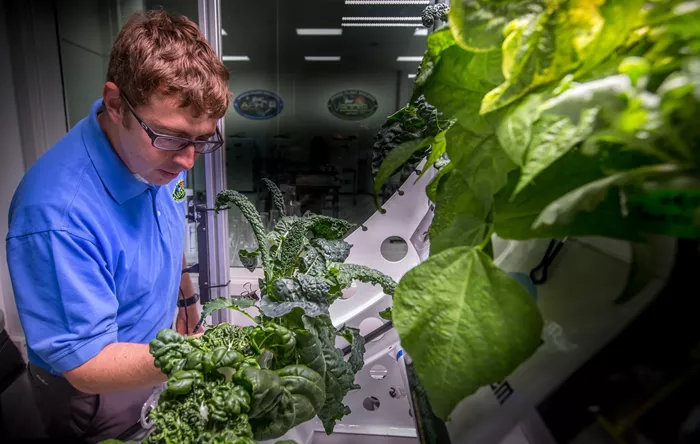Growing plants in space presents a unique set of challenges, yet it offers promising solutions for deep-space exploration and sustainable agriculture on Earth. Just like humans, plants must adapt to extreme environments, and understanding their growth in space can unlock new possibilities for supporting long-term space missions and improving crop production here on Earth.
Plants require essential resources—food, water, air, light, and space—to survive. In the weightless environment of space, meeting these needs becomes especially tricky. For example, how can astronauts efficiently water plants in microgravity? NASA’s ongoing research into plant growth in space reveals that, despite challenges like low gravity, environmental stressors, and limited atmospheric conditions, it is possible for plants to thrive in space.
Experiments testing various plant species in space help scientists determine the ideal conditions for space crops, ensuring the growth of strong, healthy plants for future missions. One notable plant used in space studies is Arabidopsis thaliana, a small, fast-growing relative of mustard greens. With its fully sequenced genome, it serves as a model for understanding plant biology in space.
Astronauts working with plants have reported unexpected benefits, such as the relaxation and enjoyment that comes from caring for them. They have also appreciated the opportunity to taste freshly grown chili peppers, noting a change in their taste perception due to the space environment.
While gravity in space affects plant growth, it does not necessarily hinder it. Some plants on the International Space Station (ISS) exhibit unique growth patterns compared to those on Earth.
Space Environments for Plant Growth:
- Moon: 1/6th of Earth’s gravity, a sunrise/sunset cycle every two weeks, with challenges like radiation and limited resources.
- Earth: 1 g of gravity, a 24-hour day cycle, facing challenges like pests and extreme weather.
- International Space Station: Near zero gravity, 16 sunrises/sunsets every 24 hours, with challenges of space limitations and microgravity.
How this benefits space exploration: By mastering plant growth in space, scientists hope to provide astronauts with fresh food and life support, enabling long-term missions beyond Earth.
How this benefits humanity on Earth: The knowledge gained from growing plants in space can be applied to enhance crop production in harsh environments on Earth, potentially addressing food security challenges worldwide.


